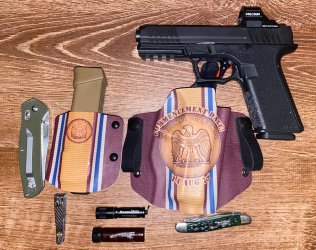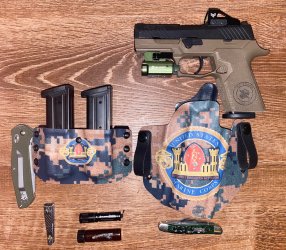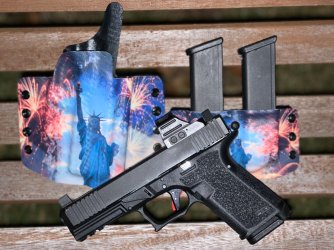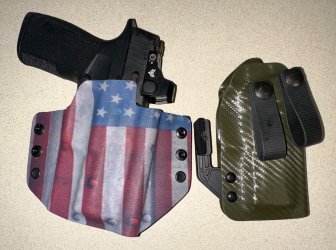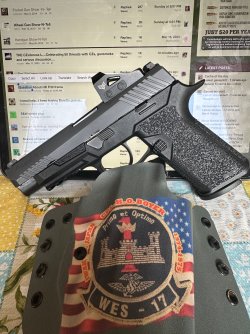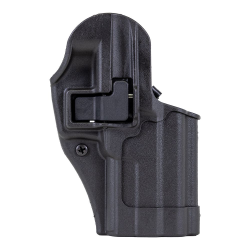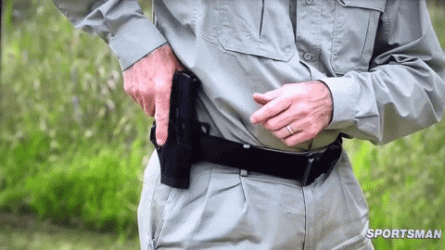Indeed. Familiarization, training and practice.
Many years ago, one of the other firearms instructors and I wanted to compare the difference between a plainclothes holster we used on-duty (Hume H726, semi-open breakfront with thumbsnap) and an open-top synthetic material holster without any retention devices. It was a slow range day and we were bored. The test was to draw and fire 6 rounds on 3 silhouette threat targets at 3-4 yds, meaning 2 hits must be made on each, inside the smallest scoring zone. Accuracy mattered as much as speed. The threat targets were spaced a yard apart, 2 @ 3yds with a middle 1 @ 4yds. Drawn (separately) from a random timer signal, repeated a few times to get an 'average'. I used the Hume (thumb snap engaged) and the other instructor used the open-top holster.
It was fun, but the thing that surprised us was that our times were so close as to not seemingly matter. Both of us were making 6 accurate hits, drawing from the holster, and running in the mid-to-high 2sec range. If I remember right, I think I nudged the fast time @ 2.34sec (thumb snap holster), but his fastest was 2.39sec.
To be fair, perhaps my use of semi-open breakfront gave me a very slight edge, as the muzzle only had to rise little more than an inch before I could sweep the gun forward, while he had to lift the muzzle clear of the front of the complete holster pocket mouth. Well, that was why we wore those H726's on-duty in our plainclothes assignments, after all.

Made for a very short lift drawstroke to clear the muzzle.
I was using the older style (brown) one on the right in this pic, with an issued 6906 (but in the pic the gun is my personally-owned 3913).

The pistol in the newer style (black) H726 was an issued 4513TSW.
What's it all mean? Beats the hell outta' me. Both holsters seemed 'fast enough', but then we spent a lot of trigger time on the range practicing.






